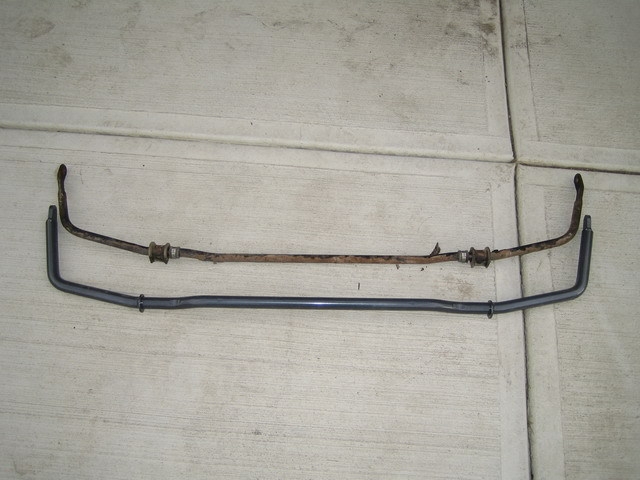
Strut bars, or stabilizer bars are they are more accurately called, more evenly distribute the tension between the left and right struts of a car. They're also called anti-sway or anti-roll bars. Think about the forces you feel on your body when you turn your car: You feel a push or throw to the outside of the turn and tend to compensate by leaning into the turn to remain upright. Strut bars work in similar fashion by stabilizing or sharing that roll tension between the left and right strut.
The amount of sway a car has when it turns is minimized, distributing the weight more evenly between the left and right. As a result, more of the tires remain solidly on the road, providing better traction and handling.
Some vehicles have a reputation for rolling over more easily than others. The higher the car sits, the higher its center of gravity. When you turn a high-stepping car at a high speed, the chances of it rolling are greater than with, say, a Mini Cooper or Miata, which sit lower to the road and have lower centers of gravity. A strut bar, by more evenly distributing the roll force, helps keep the vehicle upright.
Without a stabilizer bar, a disproportionate amount of stress is placed on different vehicle components, including the struts and suspension. When the tensions caused by turning routinely are shared, various car parts wear more evenly. And there isn't undue stress placed on one strut more than the other, which can cause premature failure and the need for replacement (unless you drive a Formula 1 race car and are constantly turning to your left and have an entire pit crew to fix things anyway).
If a strut bar doesn't match a vehicle's performance, it can transfer too much stability, driving becomes too stiff, and you lose handling. In other words, the bump on one side is transmitted to the other. Ideally, you want a stabilizer that limits body roll with out sacrificing the independence of the tires. (That's why you hear advertisements all the time for "independent suspension.) If you off-road, sometimes you don't want a sway bar because it's preferable to have the suspension act independently. Some newer Jeeps, for example, have quick-release stabilizers so the left tire can climb over a large log while the right tire can stay firmly on the ground.
Strut bars have traditionally been after-market additions. But some sporty, higher-performance vehicles have begun incorporating them into standard engineering, including the Pontiac GTO, the Maxza RX-8 and the Ford Mustang Bullitt.